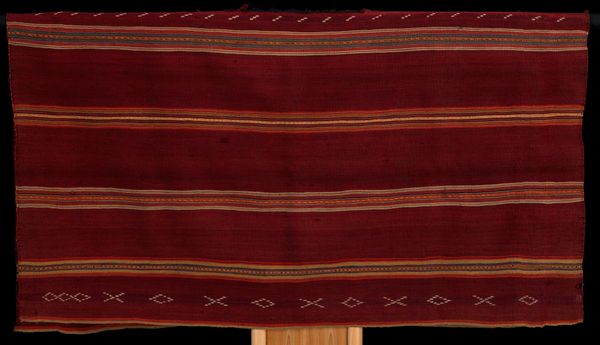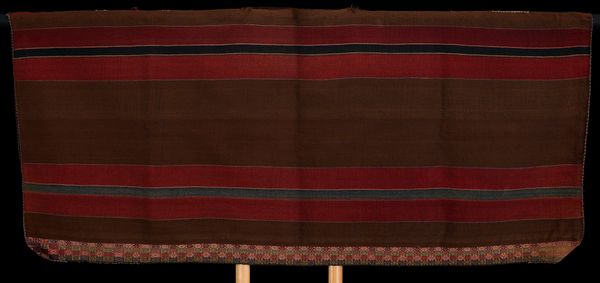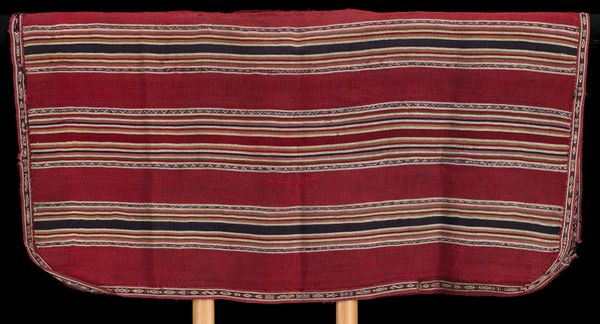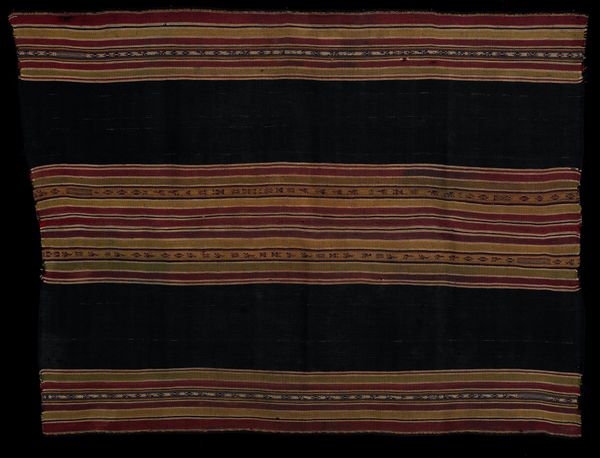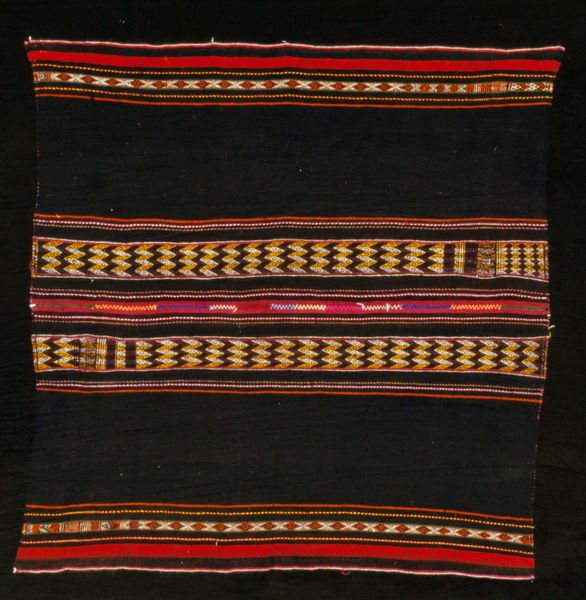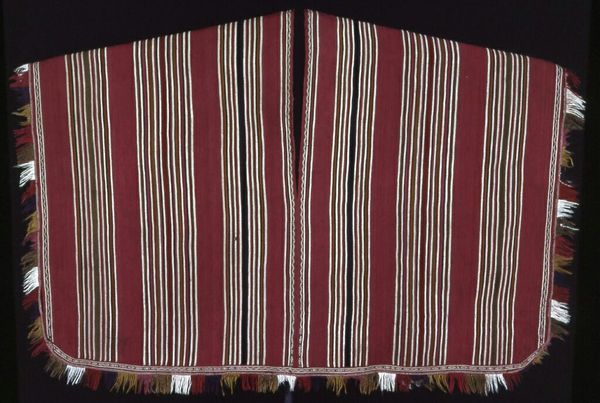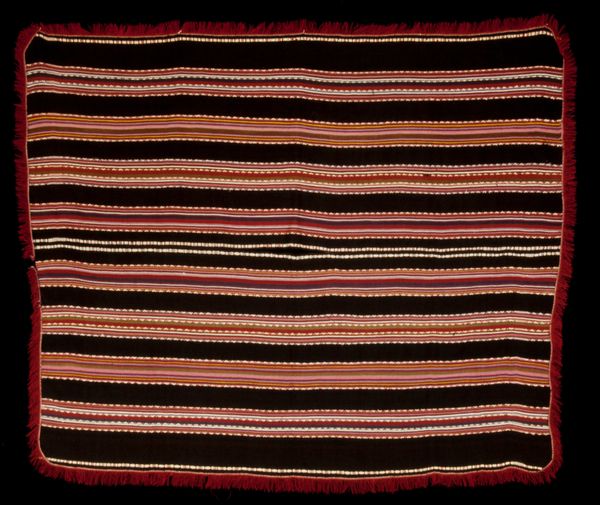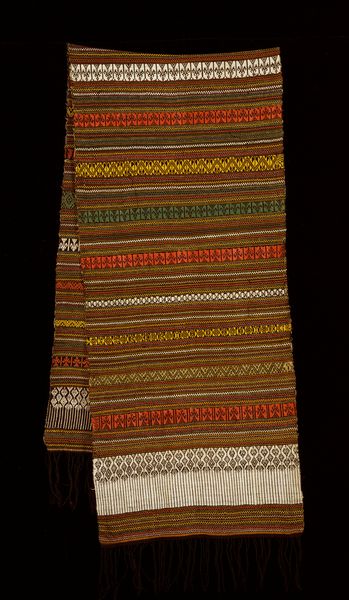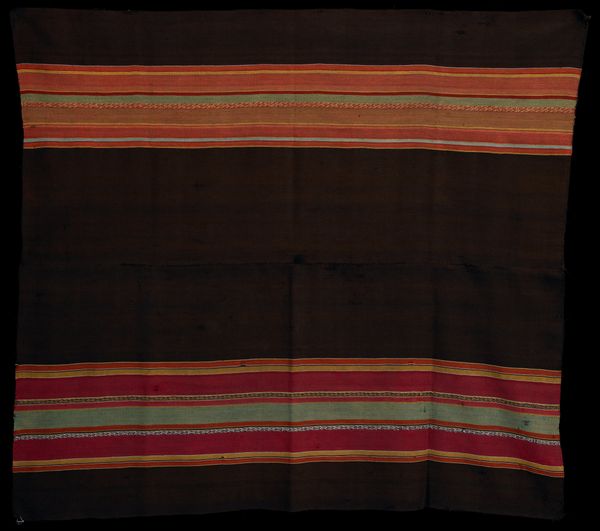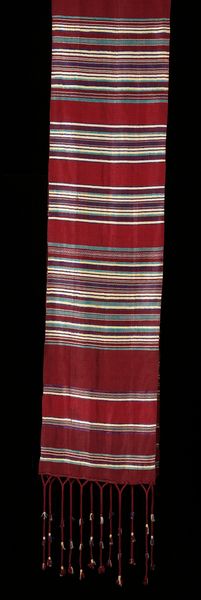
fibre-art, weaving, textile
#
pattern heavy
#
tribal design
#
fibre-art
#
weaving
#
textile
#
fashion and textile design
#
geometric pattern
#
repetitive shape and pattern
#
geometric
#
repetition of pattern
#
pattern repetition
#
textile design
#
beaded
#
layered pattern
#
indigenous-americas
Dimensions: 27 5/8 x 50 1/2 in. (70.17 x 128.27 cm) (folded)
Copyright: Public Domain
This ceremonial punchu, or poncho, was woven by the Quechua people, and it is an amazing feat of design. With its rhythmic stripes, it’s all about process, about the time spent, the attention given. Look closely. You can almost feel the texture, the give of the wool. The colors aren't shouting. It is more like a whisper of reds, browns, yellows and greens. See that band of chevrons about a third of the way down? Each one is like a tiny decision, a little shift in direction, made one after the other. It's not just a pattern; it's a conversation happening right there on the cloth. I am reminded of the work of Anni Albers and her interest in weaving as a language, a tactile and visual form of communication. It is never fixed. It's always moving, always becoming.
Comments
minneapolisinstituteofart almost 2 years ago
⋮
Punchus, or ponchos, became popular in the Andes during Spanish colonial rule (1533-1825). Following a Native uprising in the 1780s, the Spanish viceroy forbade tunics, believing them to be a source of indigenous nationalism. As an alternative, men began wearing ponchos, which were essentially tunics with open sides. They were quickly embraced as a new symbol of Native identity. Ironically, the Spanish military also appreciated the versatility of ponchos, adopting them as part of their uniform.
Join the conversation
Join millions of artists and users on Artera today and experience the ultimate creative platform.

